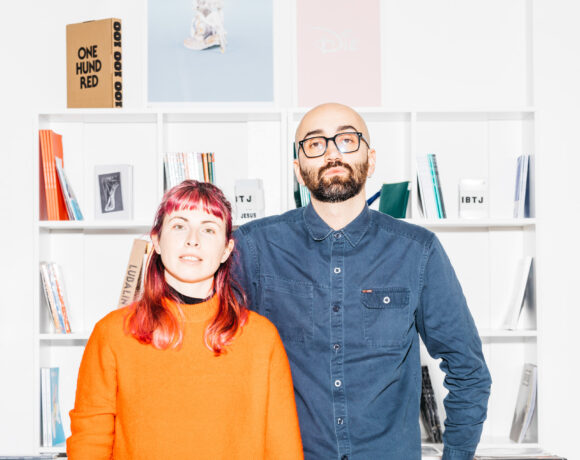The “open space” setup clearly and unequivocally favors Bruno Munari’s creative concept: the artistic product is only one stage of his unbridled imagination, between graphics, art and design. And, therefore, no caption to influence the visitor who is free to move around the first floor of the former Interzona, within a thematic and non-chronological itinerary. An eclectic map among travel sculptures, useless cars, Campari posters and Einaudi covers. Because Bruno Munari did “a job” that allowed him to support artistic thought with operational thought, free creation with commissions. Thus the exhibition “Bruno Munari. The lightness of art”, exhibited at Eataly Art House in Verona until March 31st, is a tribute to the artist who spanned the entire twentieth century, falling in love with the present in a concrete way, reworking Futurism, and finding a new balance between the Dadaist rule and case.

Bruno Munari, “Scimmietta Zizì”, 1952, courtesy of Fondazione Pirelli
The exhibition project, curated by Alberto Salvadori together with Luca Zaffarano, seems to demonstrate Picasso’s intuition when he defined Munari as “the Leonardo of the 20th century”. The work and the project, therefore, are one thing, as Depero would have proven, and it makes no sense to distinguish them into separate disciplines. For Munari, Futurism had a limit, that of supporting the static nature of sculpture: the work, however, is not only part of space, but moves in space. This is how the works that the exhibition collects in the “Perception” category were born: Munari in 1945 applied discs of colored and transparent material to the hands of an alarm clock (Ora X). The hands, moving at different times, compose, through the overlapping of materials, a shape with changing colours.

Bruno Munari, “Scultura da viaggio”, 1958, Coll. priv.
Tetracòno (1965) instead responds to the need to experiment with the transformation produced by two complementary colors in contact: red and green. For this purpose, four motorized cones, inserted inside a cubic box, rotate with different speeds and directions converging with each other. Then there are also illegible books because even a book is first and foremost an object. An object that contains surprises and has an “aesthetic” cover like the hard-to-find ones dedicated to Anne Frank and displayed on the noticeboard next to, for example, “Roses in the Salad”, the book that teaches how to cut vegetables to use them as stamps. Contamination is art, nature has rules that chance can make dialectical. If there is a rule, like the pattern of a well-known furniture company, a stain, a smudge, produces the new, the unrepeatable. «The product of imagination», claims Munari, «is born from the relationships between what is known. The imagination is therefore all the more fervent the more the individual is capable of making relationships” we read in the catalog published by Edizioni E.ART.H.

Bruno Munari, Forchetta parlante, pardon, 1958 (1979), courtesy Repetto Gallery, Lugano
«Imagination allows us to see what does not exist. Creativity can think of some practical use. The invention, on the other hand, can look for the chemical formula to create the material. Imagination is, therefore, the freest faculty, it allows you to think anything, even impossible things. Among the gifts that nature has given to man, it is certainly the most poetic. With this means the mind can travel in invented worlds, cross mysterious cosmic panoramas without limits». Here then are the fragile branches between which the now ninety-year-old Munari weaves cotton threads experimenting with geometric relationships to give solid form to an essentially empty structure and this experience is witnessed to us in this way: «At a certain point I find myself having in front of me with great surprise a solid object that wasn’t there before». Experiments and not laboratories are the experiences he faced with dozens of children with great enthusiasm. The results are the famous forks and the cockpit.

Bruno Munari, vetrino per Proiezione diretta, Fondazione JVBD, Milano, 1951, Fotografia di Davide Marossi
On the walls of the last section there are Direct Projections (1950), micro-compositions built using any material that lends itself to transparency. Thanks to the polarization effect, Munari experiments with the use of the pure colors of the light spectrum, generating a multiplicity of images, a painting in movement, through the rotation of a Polaroid filter. Next to them hang from the ceiling the useless machines, useless because they are not productive, they are mobile objects, hanging, they exploit the randomness of a breath of air, the trajectory of a beam of light, and the great Szeemann certainly in their presence would have said that they are also celibate machines.
Info:
Bruno Munari, La leggerezza dell’arte
13/10/2023 – 31/03/2024
Eataly Art House – E.ART.H.
via Santa Teresa 12, 37135 – Verona
free entry
opening hours: Wednesday –> Sunday, 12.00 – 20.00
https://eatalyarthouse.it/

He is an art critic and professor of Contemporary Art History at IUSVE. He also teaches Critical Image Reading at the Palladio Institute of Design in Verona and Contemporary Art at the Master of Publishing at the University of Verona. He has curated several contemporary art exhibitions in unconventional places. He is the artistic director of the Grenze Photography Festival. He is a theater critic for national magazines and newspapers. He organizes research and experimentation theatrical events. Among the recent publications Frame – Videoarte e dintorni for the University Library, Lo Sguardo della Gallina for Lazy Dog Editions and for Mimemsis Smagliature in 2018 and 2021 for the same publishing house, Theater and photography.






NO COMMENT